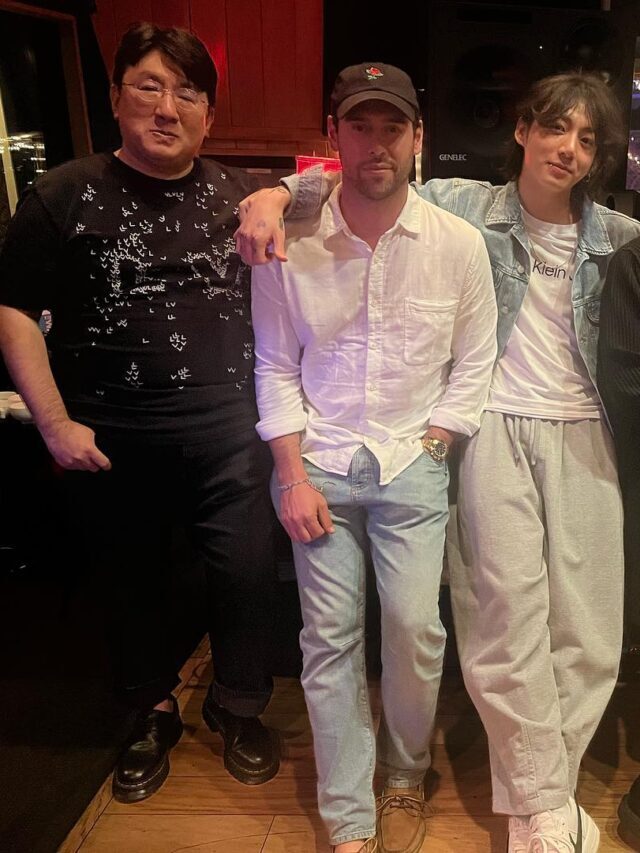Music is one of the most beautiful elements or we could say that music is the last visible magic in this modern era. A lot of scholars study music in an attempt to know the inspiration behind the composer. Different artists also study music in an attempt to recreate the magic that their dominating ancestors did.
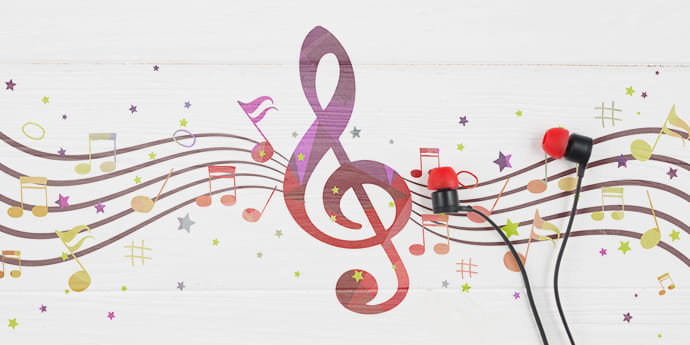
But whatever the reason might be, you need to understand music to make something better out of it. We are here to make you understand the basics of music notations. Going forward in this article, we will be describing the definition of music notation. After that, we will move ahead to the history and symbol of music notation. So, let’s start this magical study!
What Is Music Notation?
The graphic depiction of lines and symbols that instruct musicians how to perform a certain piece of music is known as music notation. Review the history and theory of music notation and realise that music notation may be thought of as sound painting, with the staff acting as a canvas, pitch acting as colours, and rhythm acting as forms.
History Of Music Notation
Just imagine a piece of music. Not the music, but a written score of musical sheet. Many of us look at it as an immediate begining to translating those musical symbols into sounds. Music notation is complex, and it is a good thing because it allows composers to express complex ideas which can make their way to your ears.
But the notes and staves we see today didn’t spring fully formed from one person’s mind. Instead, the musical notation we see today is the product of centuries of innovation and refinement. Let’s explore a few milestones of its development.
Most ancient societies created music, and while many of them had notation systems, the notation methods they utilised are mostly forgotten. Our notation method is based on neumes, a Medieval European notation system. The most prominent usage of neumes was in the church, where monks would write down and memorise chants.
Guido d’Arezzo, a monk from the 11th century, created a notation system based on pneumatic principles that eventually evolved into the system we use today. It all started, according to research, in ancient Mesopotamia, where scientists discovered clay tablets going back to 1400 B.C.
The diatonic scales and third-harmonic harmonies were written on these tablets. Western music notation, on the other hand, maybe traced back to Ancient Greek, which was widely used from the sixth century B.C. until the fourth century A.D. This music notation stayed unchanged even as the Roman Empire grew.
With the conquest of the territory by the Byzantine Empire, a new notation system known as solfege arose. Solfege, according to experts, is the process of allocating specific syllables to certain notes or scale degrees. While the Byzantine Empire did not employ this technique to record their music, it is where this sort of music notation/ musical notation began.
What is the standard notation in music?
Every language has its own written form. So is the music. A standard music notation has various symbols. A standard music notation is the written form of music’s language, which can be boiled down to two essential components: Sound and Time.
Sound consists of:
- Pitch
- Dynamics
- Timbre
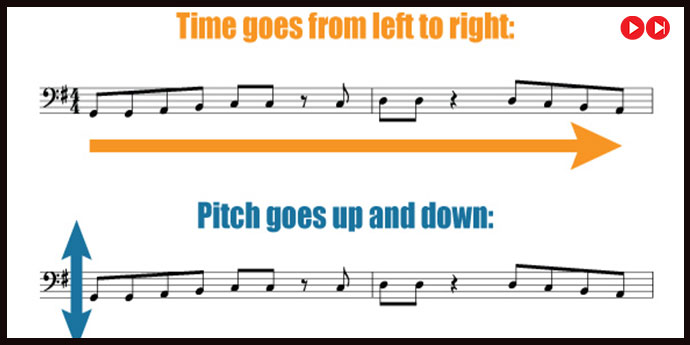
Time:
The time signature or meter signature is a notational convention used in Western musical notation to specify how many beats/pulses are contained in each musical note and bar. Which note value is to be given one beat etc.
In a musical score the time signature appears at the beginning of the notes, as a time symbol or stacked numerals, immediately following the key signature or immediately following the clef symbol if the key signature is empty.
Time signatures consist of two numerals, one stacked above the other:
- The lower numeral indicates the note value that represents one beat (the beat unit).
- The upper numeral indicates how many such beats there are grouped together in a bar.
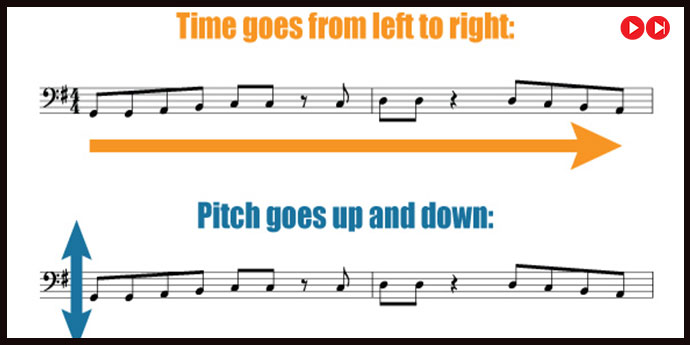
For instance, 2/4 means two quarter-note (crotchet) beats per bar—3/8 means three eighth note (quaver) beats per bar.
Different types of music notes you should know:
While playing music, musicians need to know how long to press or play each sound. Music Composers tell them by using different note symbols.
If you are wondering, what a musical notation is then here is a defined guide on some music notes or types of musical notes that are helpful to play music –
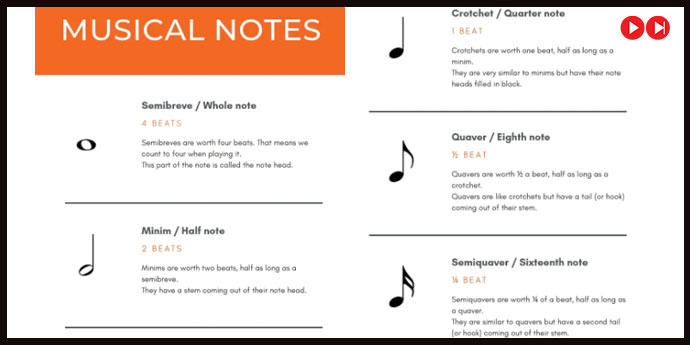
1. Semibreve (Whole Note)
The first note is called a semibreve or in the US it’s called a ‘whole note’
2. Minim (Half Note)
The second note we’ll look at is called a minim or ‘half note’.
It’s similar to a semibreve but has a line coming out of the right-hand side of its note head. This line is called a stem.
3. Crotchet (Quarter Note)
A crotchet or “quarter note”. It’s like a minim but, it has its note head filled in black.
4. Quaver (Eighth Note)
This note is a quaver or ‘eighth note.’
It’s like a crotchet but, it also has a tail coming out of the side of its stem. The note tail is also referred to as a flag or a hook.
5. Semiquaver (16th Note)
Up next, we have a semiquaver or ‘sixteenth note.’ It’s like a quaver but has two tails coming out of its stem.
6. Demisemiquaver (32nd Note)
Here we have a demisemiquaver or ‘32nd note’. It has three tails (one more than a semiquaver).
7. Hemidemisemiquaver (64th note)
A hemidemisemiquaver is referred to as a ‘64th note‘ which is just like a demisemiquaver but with an additional tail in US. Not sure about how it is called in other countries. Hemidemisemiquaver is one of the musical notation symbols which is hard to pronounce.
8. Breve (double whole note)
A breve or ‘double whole note’ which is worth eight beats, twice as long as a semibreve. So every music symbols and has its own meanings and while playing the instrument, the composer decides what duration it needs to be played.
9. Dodeka Music Notation
The Dodeka music notation is an alternative music notation that writes musical notes in a more intuitive and easier way. The notation is clear, visual and easy to understand, as well as works with every musical instrument.
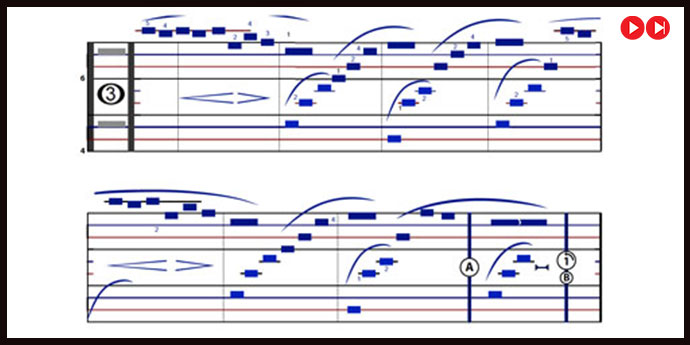
Did you know there are several music notations editing software available online that helps to customize notes as per your music? One of them is Noteflight. Noteflight’s online notation editor is easy to use, customizable, and ready for professional use anywhere you are on any device.









